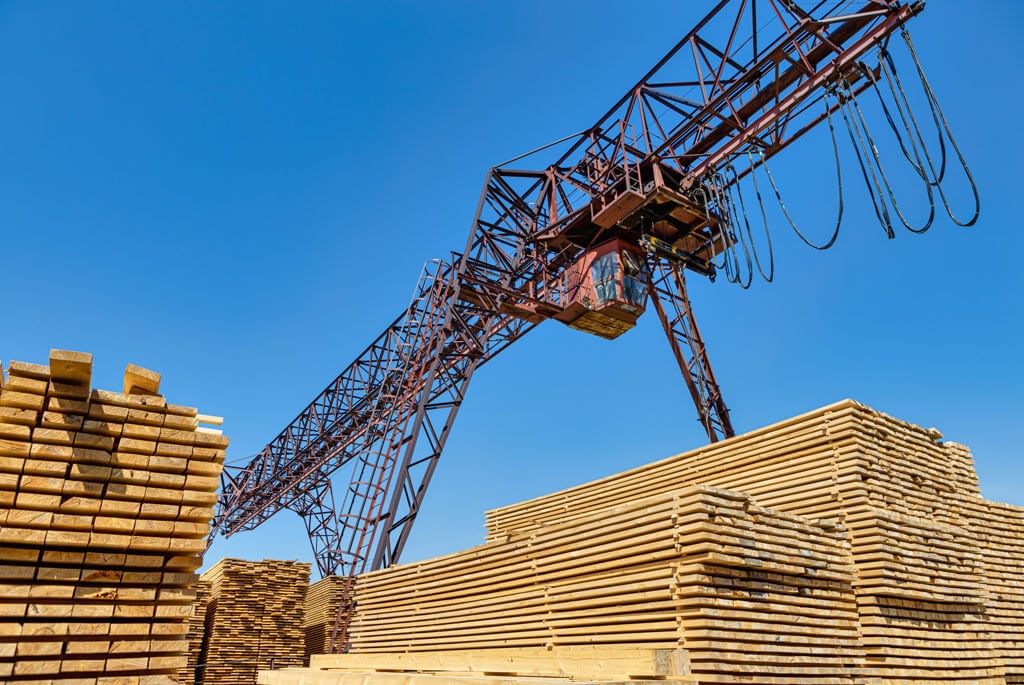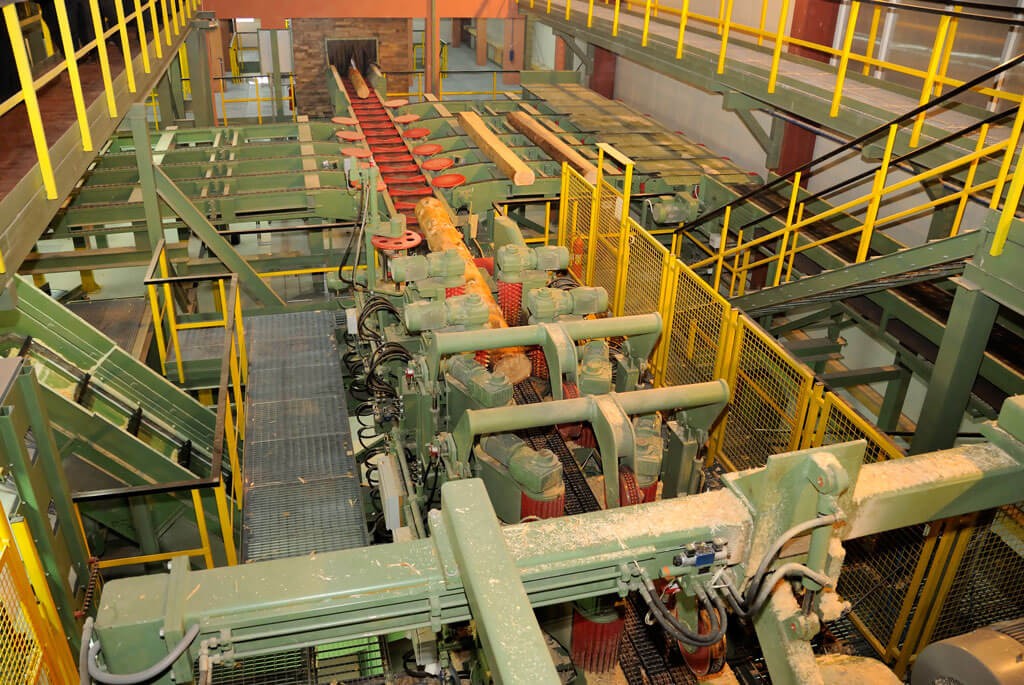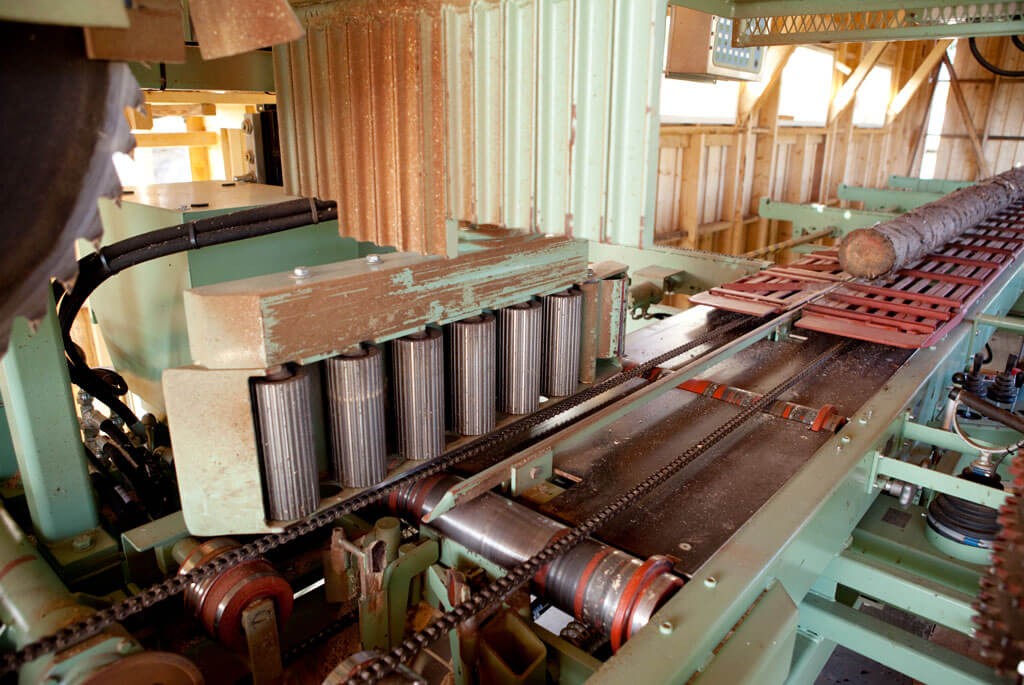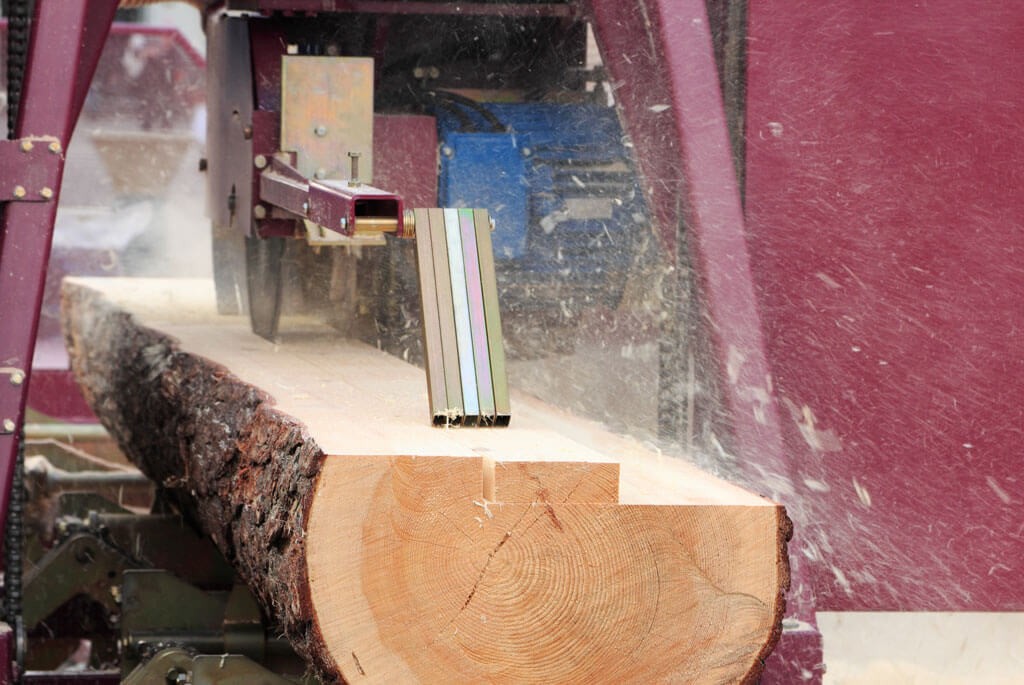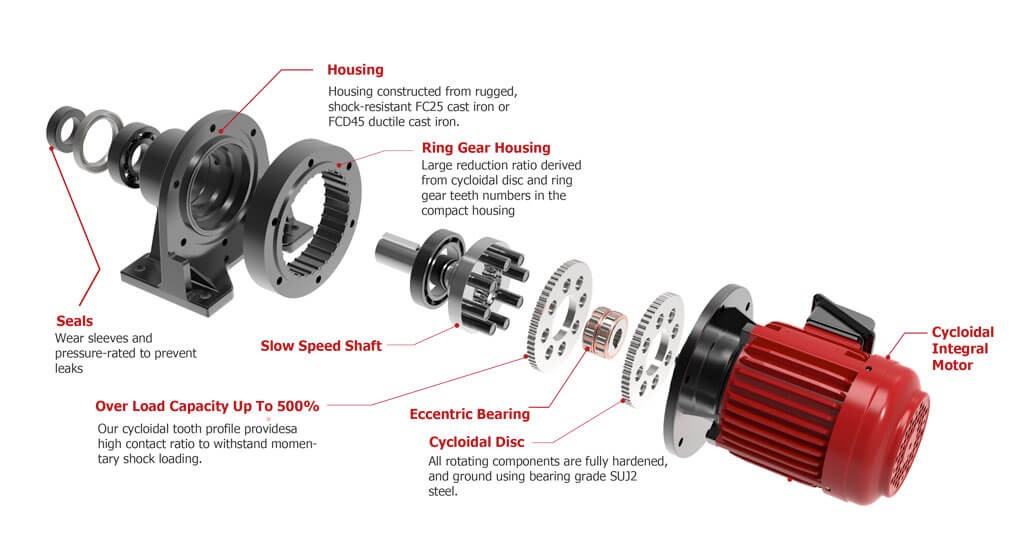Cyclo 600 Cycloidal Drives For The Lumber Industry
Extreme versatility makes cycloidal drives a logical choice for a wide range of lumber industry tasks
Cyclo Drives For Lumber Industry Transport & Processing Tasks
In the lumber industry, large, heavy and irregular objects have to be trimmed, cut and sawn to exact sizes. Trees and logs have to be transported between processing stages, which are often at least partly exposed to weather. Heavy duty cutting and sawing machines used to process the timber need to be very tough and reliable.
- Debarking
- Sawing
- Re-Sawing
- Edging
- Trimming
- Planing
- Final Trimming
- Lumber Cutting
- Veneer Manufacture
The characteristics of cyclo gearmotors and cyclo drives make them ideally suited to these applications. Resistance to shock overloads commonly encountered when transporting and handling irregular objects make cycloidal drives especially cost-effective in the lumber industry. This is because a cyclo drive of a lower rating can be used instead of a larger conventional planetary gearbox to achieve the same level of reliability.
Lumber Industry Applications of Cyclo Gearmotors & Cyclo Drives
Transports & Feeds
- Carriage Drive
- Burner Conveyors
- Main Conveyors
- Heavy Duty Conveyors
- Main Log Conveyors
- Re-Saw Conveyors
- Merry-Go-Round Conveyors
- Slab Conveyors
- Transfer Conveyors
- Waste Conveyors
- Live Rolls
- Live Roll Cases
- Off Bearing Roll Cases
- Floor Chains
- Green Chains
- Edger Feeds
- Gang Feeds
- Planer Feed
- Trimmer Feeds
- Log Deck
- Log Turning Devices
- Incline Log Hauls
- Well Type Log Hauls
- Rolls-Live-Off Bearing-Roll Cases
- Sorting Table
- Tipple Hoist
- Chain Transfers
- Craneway Transfers
- Tray Drives
Cutting & Processing
- Spindle Feed Barkers
- Main Drive Barkers
- Debarking Drums
- Chain Cut-Off Saws
- Drag Cut-Off Saws
- Planer Tilting Heads
- Veneer Lathe Drives
Selecting A Cyclo Drive For Lumber Industry Use
How do I select a cyclo gearmotor?
The selection of a suitable cyclo gearmotor depends on motor horsepower and/or torque requirements measured at the output shaft. The overhung load and service factor required from the application should also be considered. Cyclo gearmotors are very efficient over a wide range of reduction ratios. This often means that input power can be reduced, requiring a motor with a lower HP rating, without losing output shaft torque.
What information do I need to select a cyclo drive?
To identify the correct cyclo drive for your requirements, you will need to consider:
- The application: what type of machine is being driven
- Expected daily hours of operation
- Load factors: Uniform, moderate or heavy shock loading
- Motor horsepower (HP) and speed (RPM)
- Mounting type: vertical, horizontal, right-angle…
Also make a note of any specialized requirements including environmental exposure as this will be useful in determining specific casing and construction details.
How are Service Classes used for cyclo gearmotors & drives?
AGMA-defined Service Classes are used to rate cyclo gearmotors for application-specific conditions and operational loading. The three AGMA Service Classifications for gearmotors are: uniform (I), moderate shock (II), and heavy shock (III). These classifications can mean your initial product selection should be changed to best fit with your specific requirements.
What if my application has especially severe operating conditions?
AGMA Service Class I is based on 10 hour daily use under uniform loading, and this is the standard for cyclo drives. If your application is more severe, a cyclo drive with a higher service class will be required.
Will a cyclo gearmotor withstand unexpected shock loads?
Cyclo gearmotors and cyclo drives are inherently more resistant to shock loading than planetary gearmotors because loads are spread more evenly between moving parts. Momentary intermittent shock load capacity of cyclo drives and cyclo gearmotors is 500% of the standard rating. Planetary gearmotors will normally survive 300% momentary shock overloads. If you expect shock loads greater than 500% just speak to our technical team, who will design a configuration to suit..
What are the standard input speeds for cyclo gearmotors?
At 60Hz, the standard speeds are 1750 and 1165 RPM, dropping to 1450 and 980 RPM at 50Hz. Non-standard input speeds will change horsepower and torque ratings.
What are the thermal capacity limitations of cyclo drives?
Cyclo gearmotors have smooth, almost frictionless operation (unlike traditional helical gears), and a thermal rating that exceeds the mechanical capacity of the cyclo drive. Under normal ambient conditions cyclo drives are not subject to conventional heat limitations.
What inverter turn-down ratio is available?
A 10:1 ratio is standard for unbraked motors. Braked motors may be limited to 4:1 or better depending on power rating. A 1000:1 ratio is available in a C-face configuration.
Key Features of Transcyko 600 Series Cyclo Drives
- Wear sleeves and pressure rated seals ensure excellent sealing of the cycloidal drive even in harsh conditions.
- Casings constructed of rugged, shock-resistant FC25 cast iron or FCD45 ductile cast iron.
- Reduction gearing is contained in a compact ring gear housing for high power density enabling large reduction ratios.
- Fail-safe service as stresses are shared across 60% of component parts during operation, compared to 5% or less for conventional drives.
- Rotating components are vacuum degassed, hardened bearing grade SUJ2 steel for consistent and reliable performance.
- Output shafts can be customized to any size or material requirement.
- Overload capacity withstands momentary shock loads of up to 500% of normal operational range.
